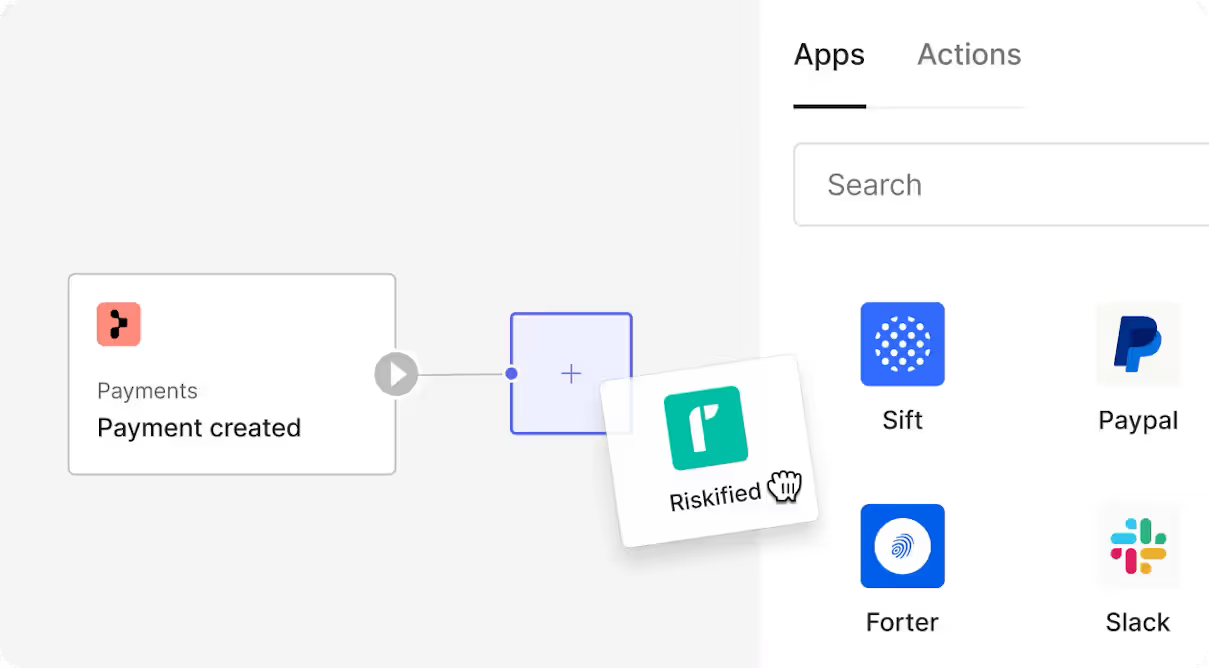False declines, also known as "false positives", occur when fraud prevention systems mistakenly block legitimate transactions.
False declines are an unavoidable side effect of fighting fraud. But if your rules are too strict, they can quickly accumulate, resulting in lost revenue and a frustrating experience for your customers.
In this article, we’ll explore how to reduce false declines without compromising on fraud protection and how Primer can help you find the right balance.
Prefer to talk to someone about how a tool like Primer can help improve your fraud prevention strategy? Book a call.
What you need to know about false declines
False declines are typically triggered by fraud rules responding to a variety of signals, such as:
- Unexpected or unusual behavior:
- The customer is traveling, or they make the purchase from a different location than where they usually shop
- The customer makes a large purchase (or several purchases) at an unusual time, like the middle of the night
- The customer is using a new device or a different browser
- Location-related issues:
- The purchase is made from a high-risk country
- There’s a mismatch between the customer’s shipping and billing addresses, or a regular customer suddenly uses a new shipping address
- The customer makes multiple purchases with one billing address and multiple shipping addresses
- Higher-value or higher-volume transactions:
- The transaction is over a certain amount
- The order volume is unusually large
- The customer has already made multiple purchases that day
The cost of false declines is high. In 2023, false declines alone put $157 billion in US ecommerce sales at risk, and 47% of retailers said false declines had a severely negative impact on customer satisfaction.
Even loyal customers won’t stick around if their legitimate payment gets blocked. It’s frustrating, and the reputational hit can be hard to recover from.
Three strategies for managing false declines
The most effective fraud prevention strategy isn’t the harshest or most restrictive. In fact, stopping all fraud isn’t the goal, because it’s nearly impossible.
What matters more is maximizing conversions while keeping fraud levels low enough to avoid chargebacks and penalties from card issuers. This is the key to effective fraud management.
Here are a few strategies that can help you build smarter fraud detection systems and cut down on false declines:
1. If you use manual rules, be smarter about what gets through
Firstly, it’s crucial to ask yourself: how do you know if your fraud detection strategy is working?
A strong fraud strategy does two things:
- Blocks fraudulent payments: This part is easy to measure. If you’re doing it badly, chargebacks will quickly pile up.
- Lets legitimate payments through: This is much harder to track. If your filters are too strict, you could be rejecting real customers without ever knowing it.
While loyal customers might complain if their payment is blocked, so you can address it, new users won’t. They’ll likely just abandon the purchase entirely, and never come back.
That’s why measuring false declines is so important.
And as counterintuitive as it may seem, the only way to identify and measure false declines is to allow some high-risk transactions to pass, even if your fraud prevention systems recommend blocking them.
Instead of automatically rejecting every transaction above a certain risk level, consider occasionally overriding your fraud filters to allow transactions that may be legitimate. Of course, you should only do this if you can comfortably stay below the chargeback thresholds of your acquirer. Consider this your ‘learning budget’: it’s an investment in refining your fraud strategy.
Here’s how that might look in practice:
- For transactions with a 20% risk score, you could allow 80% of them through.
- For higher-risk transactions—say, with a 99% score—you might still allow 1% to pass.
Over time, you can analyze the outcomes. Not just how many led to chargebacks, but also how many didn’t: that’s what reveals your false decline rate. These insights help you fine-tune your fraud rules, reduce missed revenue, and define a smarter, more profitable risk tolerance.
2. Use manual review for high-value transactions
If you’re handling high-ticket orders, like electronics, designer fashion, or luxury goods, blocking a suspicious transaction outright can be too blunt an instrument. In these cases, it may be more cost-effective to set up a manual review process to verify legitimacy before rejecting the payment.
Manual review works best when you have:
- Time between purchase and fulfillment (e.g. 24–48 hours before shipping)
- Operational capacity to contact customers or assess risk
- A threshold model to avoid reviewing everything manually
Here’s one example of how this might work in practice:
- If a customer has made fewer than five payments in a day, you allow the transaction.
- If they’ve made more than ten, you block it as potentially fraudulent.
- For anything in between, you flag the transaction for manual review, perhaps by emailing the customer or triggering a support ticket.
This approach is especially useful when the opportunity cost of a false decline outweighs the delay of a short review process.
But it’s not a silver bullet, you’ll need to build workflows around it, and ensure you’re not introducing friction that leads to more cart abandonment.
3. Consider using a fraud vendor, and give them as much data as possible
Fraud prevention platforms like Forter, Riskified, Sift, and Signifyd can be highly effective at reducing false declines.
But the best fraud tool is only as good as the data it receives. To reduce false declines and improve decision accuracy, you must pass rich, contextual data to your fraud vendors.
At a minimum, this should include:
- Customer IP address and geolocation
- Shipping and billing addresses
- Device information and browser fingerprint
- Customer history, including past payments, disputes, or chargebacks
- Any internal risk scores or loyalty indicators you’ve already calculated
This additional context enables your fraud provider to distinguish between legitimate and risky transactions more accurately.
Learn more about how data sharing is helping merchants understand their customers in our interview with Galit Shani-Michel, VP of Payments at Forter.
How to use Primer to manage false declines
Managing false declines is a complex problem with no simple solution. However, by removing the technical barriers, payment teams can work towards improving their false decline rates.
This is where Primer comes in. We empower payment teams to move faster and test new strategies without relying on engineering.
With a single API, Primer connects your entire payment and fraud stack. All your providers and services run through one unified infrastructure, giving you complete control over how transactions are handled.
Here’s how you can use Primer to cut false declines and reduce lost revenue:
Connect and test fraud tools with no code
With Primer, you can connect fraud providers like Forter, Riskified, Sift, and Signifyd with a few clicks. All integrations are pre-built and run through a single API, so setup is fast and requires no engineering work.
Once connected, you can test providers in parallel using Primer Workflows: no code required. From here, you can run structured A/B tests by splitting traffic or experimenting with different fraud strategies, then measure the results.
A few tests you might run include:
- Route 50% of medium-risk transactions to Provider A and 50% to Provider B
Compare approval rates, chargebacks, and fraud-related declines across both. - Test stricter logic in one path and more permissive rules in another
- Override declines in one branch to uncover false positives
The simplicity of Primer allows you to set up these experiments in minutes, rather than waiting for the next developer sprint.
Route fraud checks based on real-time signals
With Primer, you can route fraud checks dynamically based on the specific characteristics of each transaction. This allows you to apply the right level of scrutiny where needed while keeping trusted customers moving through the checkout.
You can build routing logic around data such as:
- BIN range or issuing country
- Customer order history or transaction value
- 3DS result
- Your internal risk score or past dispute activity (from your own data)
This flexibility enables you to handle various scenarios more precisely. For example, you might:
- Skip checks for returning customers using a known card and shipping address
- Apply stricter checks for high-risk regions or first-time buyers
- Trigger a backup fraud provider only when 3DS authentication fails
Primer also supports hybrid fraud strategies. If you use an in-house risk engine, you can combine it with third-party tools in a single flow. You decide when to rely on each one, or when to apply both, based on your own logic and risk profile.
With Primer, you can build and update your fraud strategy without engineering support and make changes instantly based on performance data.

Examine your data to defeat false declines
To effectively A/B test fraud strategies, you need real-time visibility into how transactions move through your stack, where they are blocked, and why.
Primer’s Observability platform gives you that visibility. It provides a complete view of every payment attempt, across all processors, payment methods, and fraud tools, from checkout through to the final response.
Observability gives you access to more than 20 metrics and over 100 visualizations, so you can track fraud patterns, spot outliers, and understand how your rules or tools are performing.
Once you identify an issue, you can go back to Workflows and update your logic. You can reroute traffic, adjust thresholds, or try a different tool. You can test, measure, and improve all in one place without waiting for a deployment cycle.
To find out more about how Primer can help reduce payment fraud as a whole, check out this article: How to prevent online payment fraud: the complete guide
Fight fraud with fewer false declines.
The goal of fraud prevention isn’t to zero out fraud; it’s to maximize revenue and minimize costs. Understanding false declines can help you build a custom strategy that fits your business goals.
Whether you have a higher risk tolerance or want to err on the side of caution, Primer empowers you to fight fraud your way.
Book a demo to see how Primer works for yourself.




(1).png)
.png)